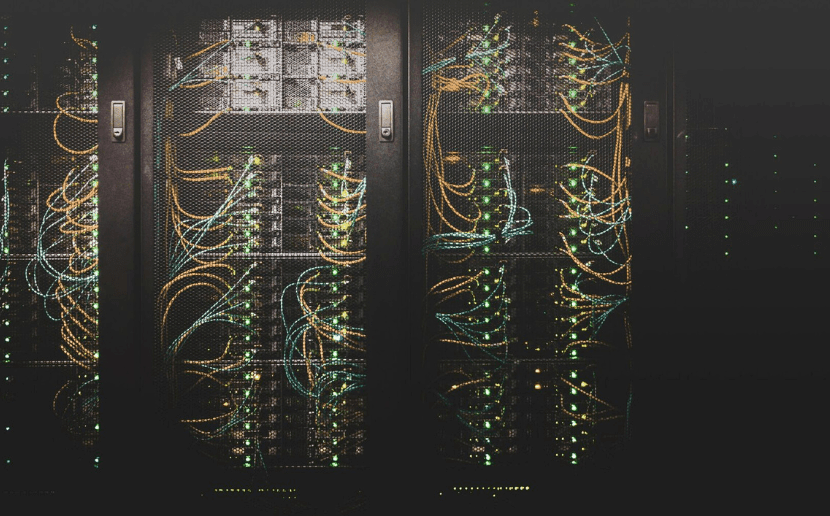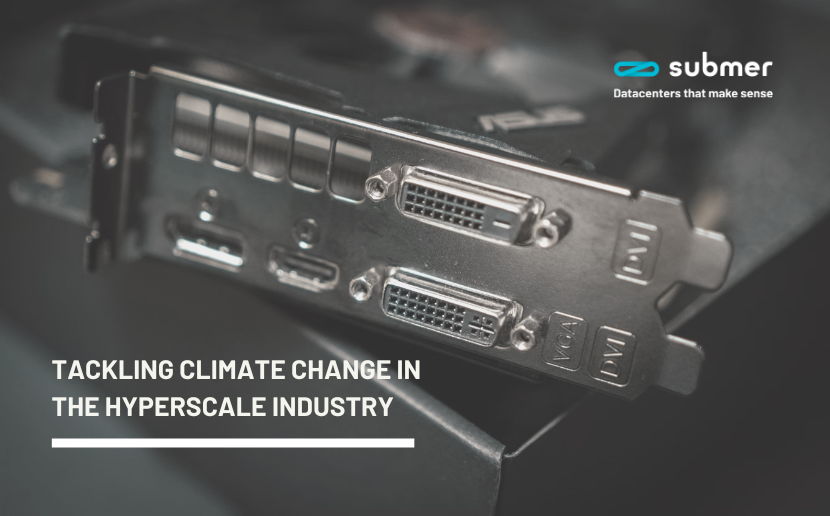Datacenters are dubbed both the hub and driver of the modern life we know and love today. Your Philips smart bulb? Needs a datacenter. The parking sensors on your car? Need a datacenter. The streaming service you use on a Saturday night to recharge after a hard week at work? You guessed it…needs a datacenter! According to Northeastern University, 1.7 megabytes of data are created every second per person.
If datacenters were to disappear, life as we know it, along with innovation itself, would slow down completely – meaning hyperscale datacenters are more important than ever…but then again, so is their drainage of natural resources. Let’s look at the ways in which hyperscale datacenters can improve their sustainability and set an example for the rest of the industry.

What’s a Hyperscale Datacenter?
Hyperscalers are often defined by their size and capacity. To be classed as one, it’s widely accepted that the facility must occupy over 10,000 sq ft and have a capacity bigger than 40 MW.
Hyperscalers are usually owned and operated by the company they serve; notable companies include Amazon Web Services (AWS), Google, Meta, Apple, and Microsoft.
What Do We Mean by a Sustainable Datacenter?
Datacenter sustainability refers to the overall energy efficiency and environmental friendliness of a datacenter. The idea of a green datacenter often looks at different processes and systems that can be implemented to turn datacenters from a burden into a benefit.

Sustainability Strategies
1. Do more with less
Implement processes and technologies throughout the whole facility that enables more while using less of nature’s resources, whether that be through adopting renewable energies, different cooling techniques, or more efficient processes. The main goal? To reduce the amount of water, power, and land being used.
2. Demoting Power Usage Effectiveness (PUE) from the king of the metrics
PUE has long been the go-to metric for measuring efficiency – and until now, it’s done a pretty good job. Nevertheless, many believe that this is now no longer enough to provide the true picture of how sustainable a facility is. Datacenters are now being called upon to also consider factors such as CO2 emissions and Water Usage Effectiveness (WUE). So if you’re currently unable to provide the data for these metrics, now is the time to get tracking!

3. Out with the air and in with the new
We’re not saying you must do a complete overhaul of your IT cooling systems… ok maybe we are. BUT immersion cooling really is worth it! Instead of using air to cool IT components, this technology submerges IT hardware in a dielectric coolant. It solves both business and operational issues, coming from space, density, and hardware lifespan, while also offering the environmental benefits of zero-waste of water and heat recapture. Implementing immersion, hybrid or otherwise, is widely recognized as the most environmentally friendly cooling technique to date.
4. Reduce, Reuse, Recycle!
As demands on server capacity and performance become more intense, companies are faced with the dilemma of what to do with old equipment. Plus, research suggests that the number of redundant servers in air-cooled datacenters is extremely high. Therefore, recycling will gain more popularity in the coming years. Not only does this represent an opportunity for extra revenue from IT asset disposition, but this process may also help to facilitate the transition from air cooling to immersion.
5. Beat the heat by reusing it
No matter what cooling system you use, to some extent, heat is unavoidable. What separates some technologies like immersion cooling from the rest of the herd, is that heat can be recaptured and repurposed. This can be used to power local office buildings and hotels, feed district heating systems, and more, and opens up a new potential revenue stream for datacenters. At a time when operational costs are so high, can we really afford to be letting all that heat go to waste?
6. If you don’t do it, someone will make you!
ESG regulations for the datacenter industry have been steadily coming over recent years, and both governments and the general public have been waking up to the impact datacenters are having on the environment. Subsequently, if companies aren’t taking more sustainable initiatives, chances are they won’t get very far. Redesigning hyperscalers for climate change means futureproofing for tomorrow!
Ready for Change?
Adopting and designing hyperscalers, and more widely datacenters, to be more sustainable is no longer an option, it’s a necessity. The industry and its providers must work together to find a balance between sustainability and resilience. We need to work together to implement new technologies, promote industry-wide initiatives, and have open discussions about our metrics and results.
At Submer, we believe we’re helping hyperscalers become leaders of change and innovation with their single-phase immersion cooling technology. Get in touch with us to discover what we could do for you today or take a look at our project with Wyoming Hyperscale White Box below to find out more about our solutions.



